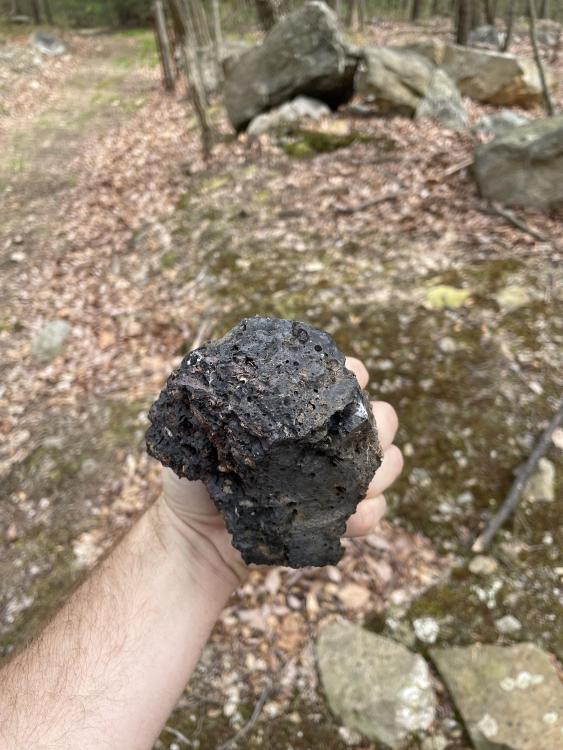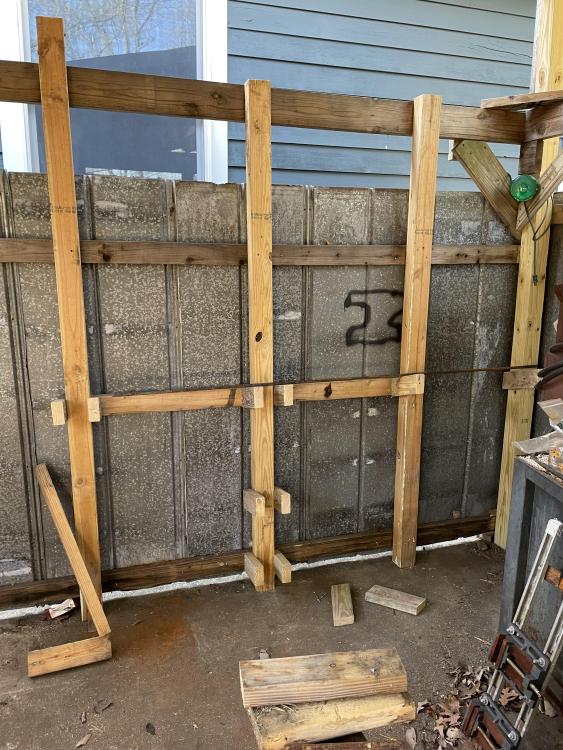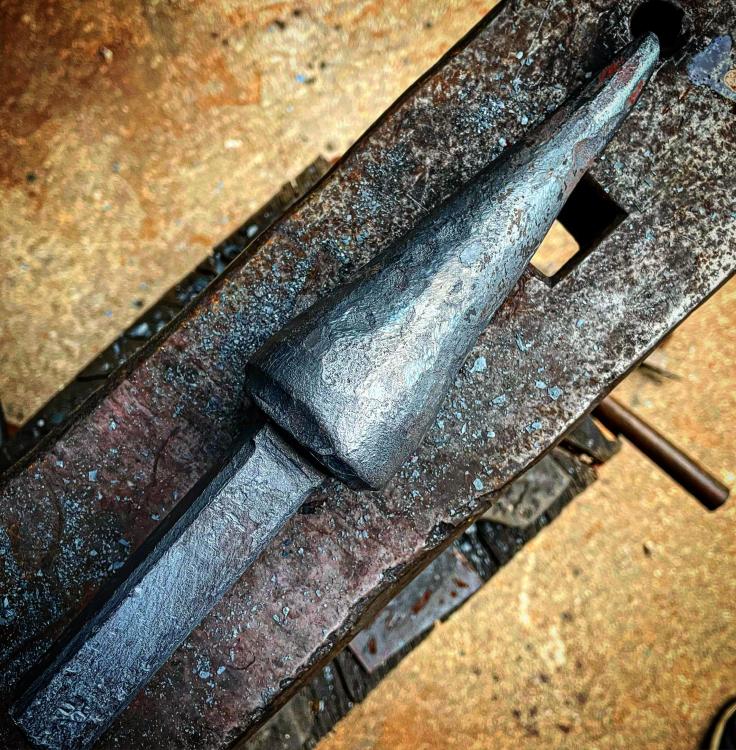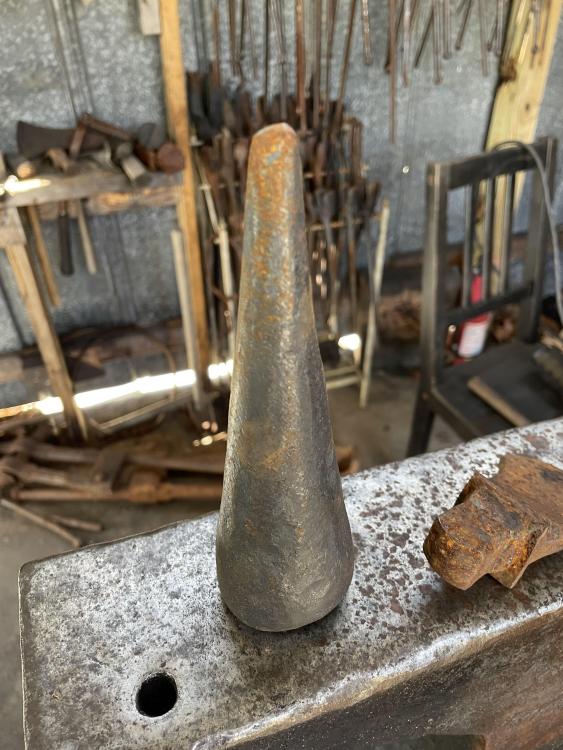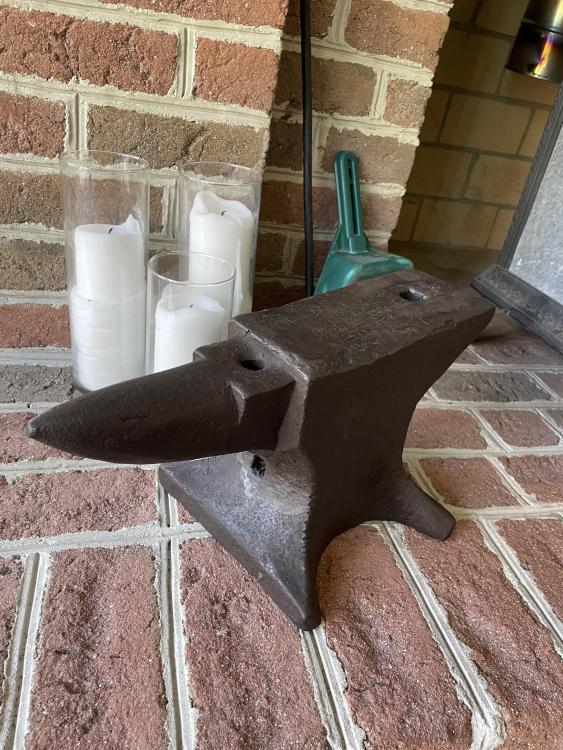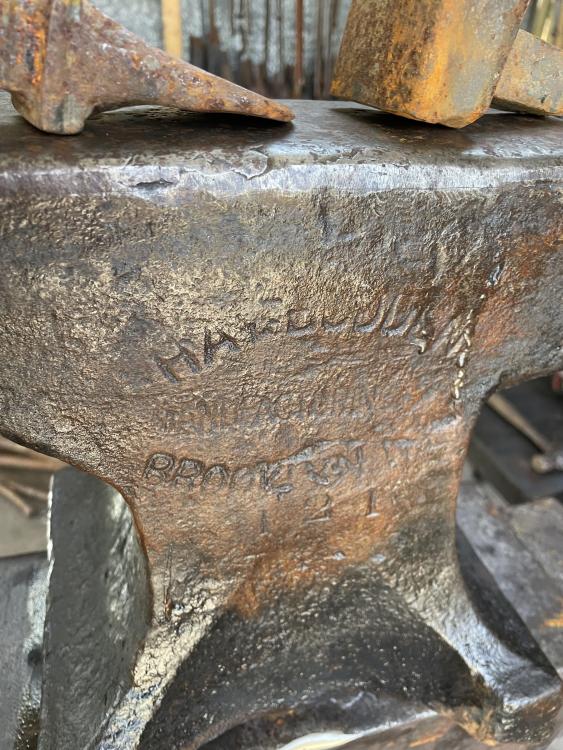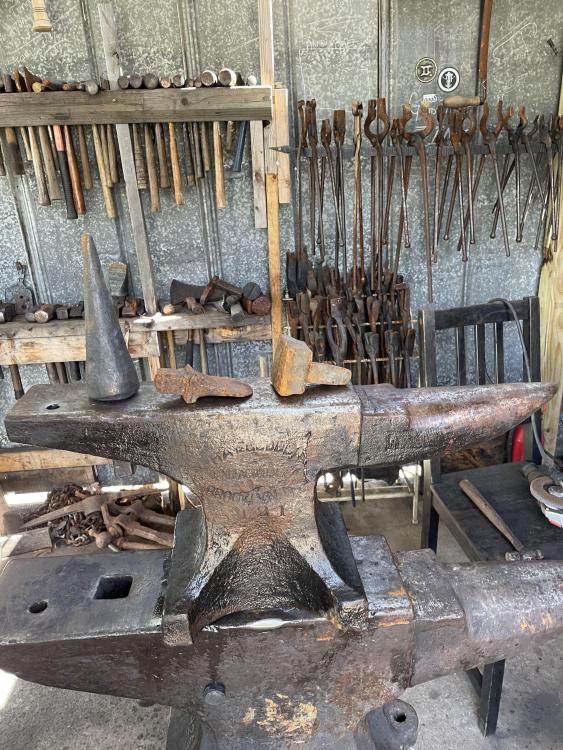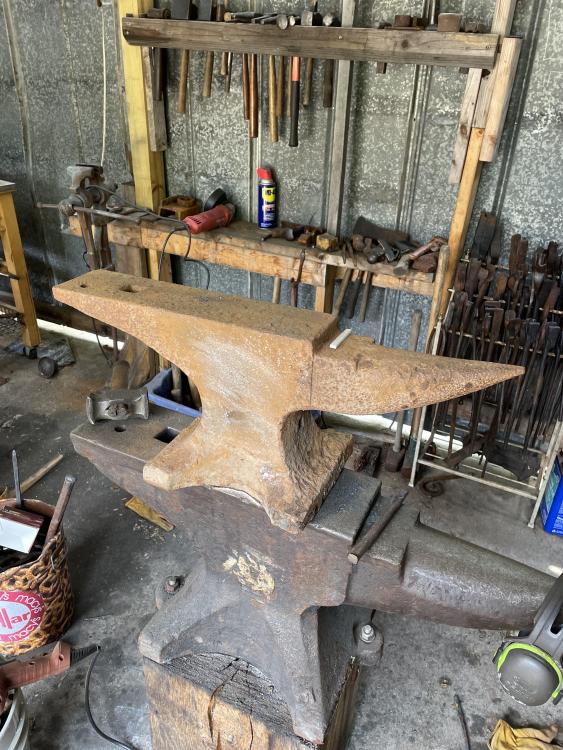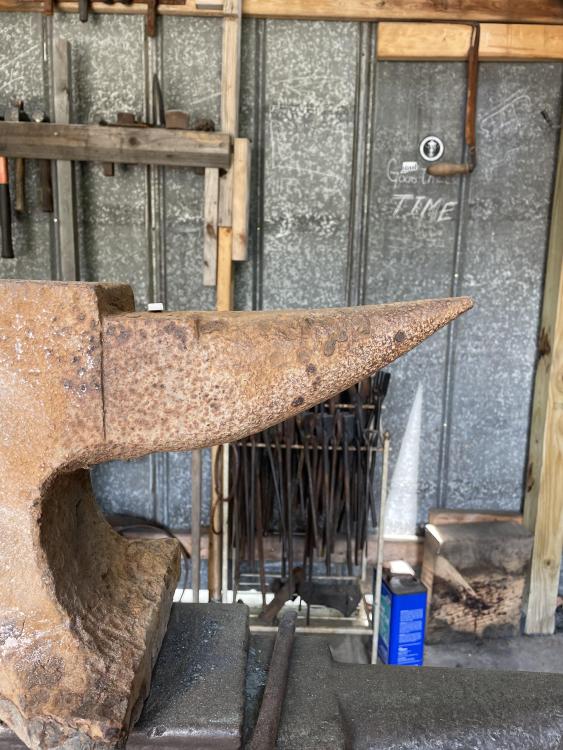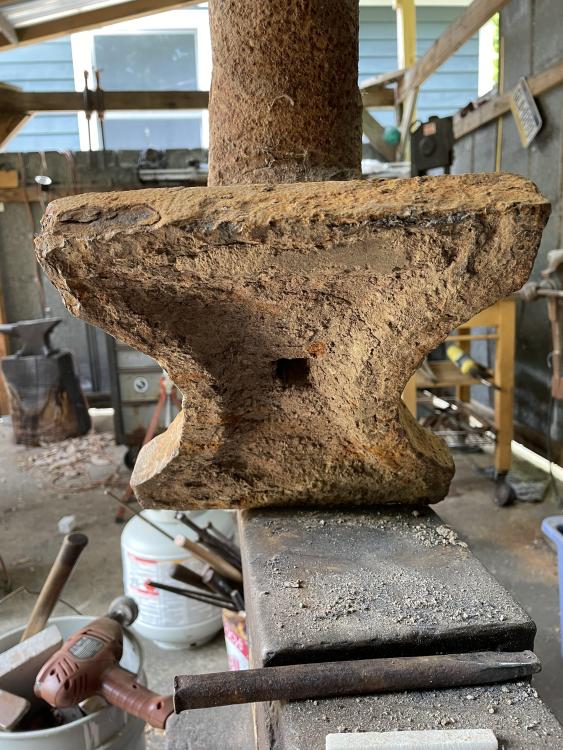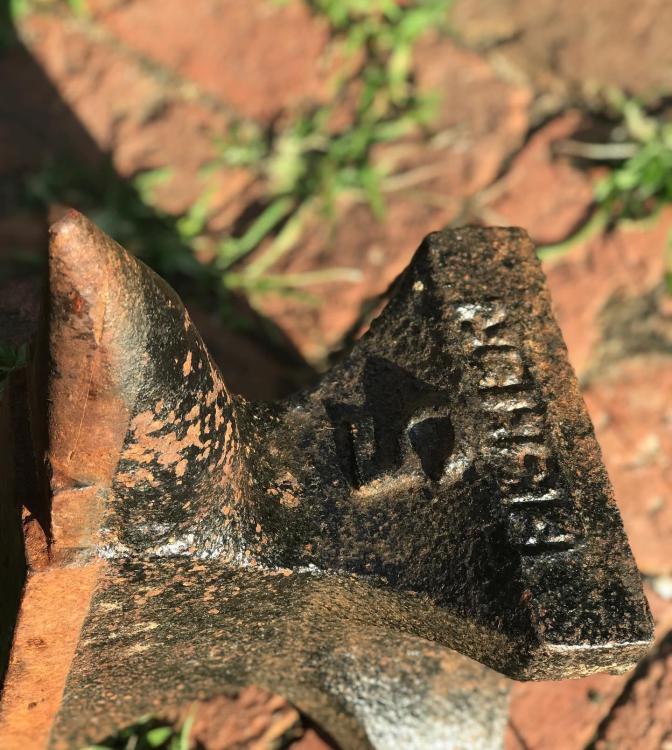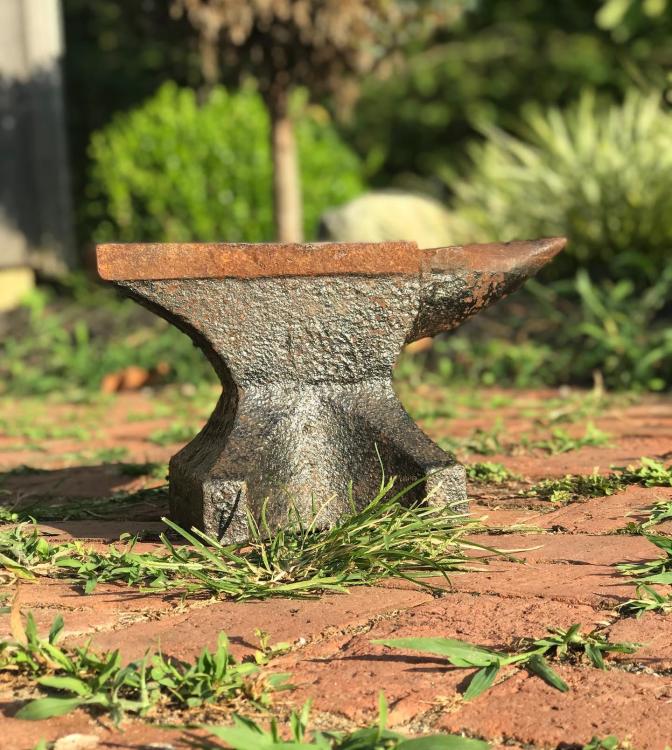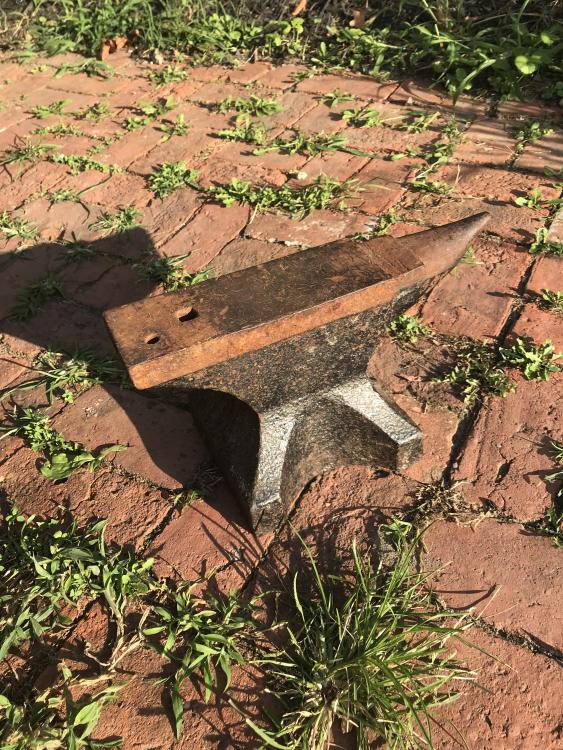-
Posts
115 -
Joined
-
Last visited
Content Type
Profiles
Forums
Articles
Gallery
Downloads
Events
Everything posted by Ridgeway Forge Studio
-
That is a deeply evocative piece. I agree that the welds being imperfect fit the idea of a jail - unless its meant to be a window? But it captures the unexpectedness of loss and longing, no time to perfect the cage that holds us back...
-
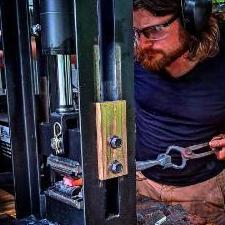
Is this slag?
Ridgeway Forge Studio replied to Ridgeway Forge Studio's topic in Smelting, Melting, Foundry, and Casting
That’s not too far away from Longwood Gardens- there’s some nice blacksmithing work in the park, as well as some incredible gardens -

Is this slag?
Ridgeway Forge Studio replied to Ridgeway Forge Studio's topic in Smelting, Melting, Foundry, and Casting
When you make it down this way, stop by! The Mrs and I have plenty of space! George, thanks for that information. I wasn’t aware of the reasons behind the legality of slavery in union states. The Slag may have been used as road fill- there is an old path that leads over the mountain from a failed ski resort construction project…. -

Is this slag?
Ridgeway Forge Studio replied to Ridgeway Forge Studio's topic in Smelting, Melting, Foundry, and Casting
I will test with a compass, Frosty. We are about 4 miles away from the Catoctin Iron Furnace, which was a fairly large iron producer during the Civil War. Despite being in the north, it 'employed' a large number of African American slaves, which is a sad mark on our hometown. But the iron furnace is still there - they have a festival every year that for the past two years I have demonstrated at. They do a live iron pour, which is really quite something. I doubt they would have carted the slag a full four miles, considering the iron furnace was downhill and there is a perfectly good valley to dump slag in. All surrounding us there are old sites where iron was produced even in the colonial era, I believe. We found an old wrought horse/mule shoe decades ago - the grain is clearly visible, and would make sense given the iron and charcoal. Here's the website for the foundation preserving the heritage of the Iron Furnace: https://catoctinfurnace.org/ Really cool piece of history, although I'm biased for living next to it. -
I live in the Catoctin mountains in Maryland, which was historically a very big charcoal and iron producing region. hiking behind my house, I found this rock. To my knowledge there was no iron production on my property, but this piece of “rock” looks suspiciously like slag, which leads me to think iron used to be produced very near where my blacksmith shop is currently.
-

Hardy Cone
Ridgeway Forge Studio replied to Ridgeway Forge Studio's topic in Tools, general discussion
Thanks, Frosty. I am grateful for this forum, even if it’s not as busy as it used to be. irondragon- that was my past two years. Clearing trees and splitting firewood. A lot of my previous projects suffered from creative burnout, so I took a hiatus and took up ceramics to keep myself making -

What did you do in the shop today?
Ridgeway Forge Studio replied to Mark Ling's topic in Blacksmithing, General Discussion
Finally after months of disarray I made it into the shop. I did some clean up and most importantly started to build a stock rack against one wall. all of my stock previously sat outside on the ground. It was not good, to say the least. -

Hardy Cone
Ridgeway Forge Studio replied to Ridgeway Forge Studio's topic in Tools, general discussion
I did a lot of it under the 12 ton hydraulic press , but cleaned it up by hand. I hot rasped it to its final dimension- I meant to go over it again with the belt sander, but it fell into the “tomorrow” pile, never to receive its just reward. it goes along with an anvil I’m parting with, otherwise I would go back over it to finish… but there is always the next one! -
I thought I would share a tool I made a while ago- a hand forged cone for the hardy hole. This is as forged and filed, no grinding done. obviously it needs cleanup, and I should have been more judicious with my hammer blows. but, it works as intended- and is very useful.
-

Show me your anvil
Ridgeway Forge Studio replied to Glenn's topic in Anvils, Swage Blocks, and Mandrels
here’s my new indoor anvil- graduated from a life of hard work, much too hard for it’s tiny weight class. -

Show me your anvil
Ridgeway Forge Studio replied to Glenn's topic in Anvils, Swage Blocks, and Mandrels
Jennifer, I recently picked up a later 180 ish lb Hat Budden with a very rough face- but it’s hardy hole matches the size of most of my hardy tools (they were a gift from a downsizing friend) I will post a picture once I clean up my shop- I recently got into ceramics and haven’t forged since Christmas… my first “real” anvil I moved inside next to the fireplace- 75lb London pattern, pre- 1860s with a retrofitted Pritchel on the cutting table. It’s a beautiful little anvil, the face is almost worn through on the sweet spot. the 121lb I traded a 300ish lb Austrian anvil for- found I didn’t use it that much. I try and cap my anvil limit so I don’t get accused of hoarding! -

Show me your anvil
Ridgeway Forge Studio replied to Glenn's topic in Anvils, Swage Blocks, and Mandrels
I thought I would share my 121 lb Hay Budden - Sadly I'm parting with her, I have already more anvils than I need. -
I think this addresses a few things: Anvil edges should not be 'sharp' - they are, in fact, radii fullers in a certain sense. Also, that Brian Brazeal video is the one I was thinking of for the effectiveness of moving metal with half faced blows. The answer to this thought experiment won't change my use of the horn, practically speaking, but it may go to show alternative ways to use hornless anvils or improvised anvils. The horn is a big draw for people, I think, and between that and the square tool holder on most London Pattern anvils, its what people most often stick on when buying an anvil. Understanding all parts of an anvil and their uses is important to know what is and is not quality. The anvil in the original post as the Hardy Hole - So a horn is not really that big of an advantage, especially if only used to true up rings - you can just as easily make a mandrel. But the anvil above has edges - these can be used just as well as a horn to draw out material.
-
Frosty, Thanks for your reply! I am in no way doubting Mr. Aspery's skill - I have the highest regard for his work and his contributions to the ABANA curriculum. I think I mean to ask the question more along the lines of a conceptual thought experiment. Fullers are objectively more efficient that flat surfaces, but connecting the dots I wonder whether the unsupported horn takes away enough efficiency to negate its benefits. I have to wait for some mourning doves to hatch in my shop before I test out my theory. I think this ties in to two conversations commonly held here on IFI - the mounting of railroad track pieces as anvils and questions about mass. Ideally, a fuller would be supported uninterrupted all the way to the ground, the way some French pig anvils are with their slightly domed faces. If you had, for example, a horn that kept its top radii but extended vertically into the ground (which would make it not a horn I suppose), it would be more effective than an unsupported horn. A well dressed anvil edge seems to me to be, ounce for ounce, objectively more efficient than the horn in drawing out. That's all I'm trying to say. I have tried both ways, and, while it takes more precisions to ensure you don't get a cold shut, I feel that the edge of the anvil works as well if not better for drawing than a horn. That being said, I do think the overall size of the anvil makes a difference in drawing over the horn. My 350 Fisher has plenty of strength to resist flexing on the horn - but my 120lb Hay Budden seems (just a casual guess) to be less efficient, and I can't help but wonder if the Wrought Iron flexes in use. I guess what I'm trying to say is that a horn has its uses, and drawing is certainly one of them. But drawing over the edge is a valuable skill that should be learned, and perhaps even preferred for general hand forging, such as drawing reins on tongs. Just my two cents. I enjoy a good theoretical conversation! -Pat
-
I have been thinking about this thread all day - I was watching some videos of Mark Aspery drawing out over the horn of his anvil, and noticed that it seemed inefficient compared with the work I have seen from others using half-faced blows over the sweet spot of the anvil. Given that the horn is unsupported in the vertical dimension and is only laterally supported, would it not tend to flex more under heavy blows compared to half-faced blows in the vicinity of the sweet spot? I know there is a lot of advice about drawing over the horn and, given the points of contact, seem to make sense. But is there any evidence?
-

What did you do in the shop today?
Ridgeway Forge Studio replied to Mark Ling's topic in Blacksmithing, General Discussion
Jennifer, your work is an inspiration. Well done. -

railroad tie plate
Ridgeway Forge Studio replied to Matt Smith's topic in Blacksmithing, General Discussion
Two tie plates welded together might work as a makeshift swage block. The only question is how much in welding materials makes this “free” project worth it over purchasing a swage block or a larger piece of metal (maybe a 3”x 3x2 chunk) and putting some holes in that? -

Power hammer, hammer eye punch die?
Ridgeway Forge Studio replied to mnidoone's topic in Slitters, Punches, Drifts, etc
For what it’s worth, it feels unnecessarily ambitious to try and do both steps at the same time. whats wrong with making a slot punch, then several powerhammer drifts? -

Power hammer, hammer eye punch die?
Ridgeway Forge Studio replied to mnidoone's topic in Slitters, Punches, Drifts, etc
I would try to make that pyramid into a triangle- lose the cubic dimension, so that it is rectangular in a top-down view, a triangle from the side. Usually you punch then drift- it looks like your idea is more punch drift combo -

Trenton, I Think
Ridgeway Forge Studio replied to Ridgeway Forge Studio's topic in Anvils, Swage Blocks, and Mandrels
It does have the fullering under the heel! No trace of a logo that I can see however. I suspect this sat in a muddy basement or flooded barn- the indent was filled with dried mud that smelled like a creek. I don’t think it’s ever been struck. -
I just picked up this anvil for a small steal- it’s pitted through and through, but I have another anvil for a smooth face. I think it is a Trenton. I’d love a positive ID! dimensions are: 26” horn to heel, 4” wide, 10.5” high. I don’t have an exact weight, but I would guess between 150-175?
-
Really makes me wonder who didn’t use it. Someone bought it and never used it, and so on. Josh, any chance the black paint on this little guy could be original?
- 658 replies
-
- Cast anvil
- Fisher & Norris
-
(and 1 more)
Tagged with:
-
No one really tells you how small 50lb anvils are… Just picked up a Fisher #5 dated from 1887. oldest anvil I own to date!
- 658 replies
-
- Cast anvil
- Fisher & Norris
-
(and 1 more)
Tagged with:
-

What did you do in the shop today?
Ridgeway Forge Studio replied to Mark Ling's topic in Blacksmithing, General Discussion
Not as of yet- the shop is built so that the second overhang acts as a smoke shelf and generally keeps the smoke out of the shop without a chimney- works except when there is a south eastern wind, which is a bit uncommon for me.

